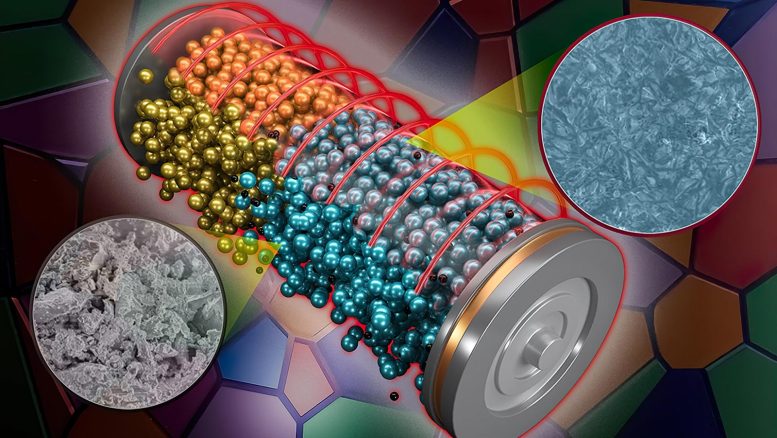Igniting Performance: Small Tweak Doubles Charging Speeds in Solid-State Batteries

Scientists at ORNL have created a new technique for compacting materials that resulted in a solid electrolyte with better consistency compared to the conventional method, which had more empty spaces. This innovative material can be combined with a battery system to enhance its stability and charging speed. Credit: Andy Sproles/ORNL, U.S. Department of Energy.

Boosting Performance With A Simple Adjustment
Researchers at Oak Ridge National Laboratory have managed to increase the rate at which solid-state batteries charge by modifying the way the solid electrolyte is compressed. This breakthrough leads to a battery technology that is not only safer, but also more effective and capable of being mass-produced in industries.
Researchers from Oak Ridge National Laboratory (ORNL) have discovered that making a minor adjustment can lead to significant enhancements in the efficiency of a specific type of solid-state battery. This discovery is of utmost importance for the widespread acceptance and usage of electric vehicles.
These batteries utilize a solid electrolyte in place of a potentially combustible liquid. As the battery undergoes charging or functioning, ions travel between the electrodes via the electrolyte connecting them. An innovative technique of compressing the solid electrolyte virtually eradicates small air gaps that impede the flow of ions, resulting in the battery charging at twice the speed.
According to Marm Dixit, the main researcher at ORNL, they employed a technique wherein they heated the press and spread the electrolyte on it. After that, they allowed the electrolyte to cool under pressure. As a result, they were able to obtain a material that is nearly 1,000 times more conductive. Dixit emphasized that despite using the same material, they were able to enhance the battery's performance in various aspects simply by altering the manufacturing process.
The findings show a method for manufacturing solid electrolytes on a large scale, allowing for superior regulation of their internal composition, resulting in more dependable batteries.
Title: Personalization of Anti-Perovskite Solid Electrolytes at the Microscopic Level In the article titled "Tailoring of the Anti-Perovskite Solid Electrolytes at the Grain-Scale," researchers Marm Dixit, Nitin Muralidharan, Anuj Bisht, Charl J. Jafta, Christopher T. Nelson, Ruhul Amin, Rachid Essehli, Mahalingam Balasubramanian, and Ilias Belharouak present a fascinating study on customizing anti-perovskite solid electrolytes at the microscale. The research was published on April 21, 2023, in the esteemed journal ACS Energy Letters, with the DOI 10.1021/acsenergylett.3c00265. The study's main focus was on the manipulation and individualization of anti-perovskite solid electrolytes to enhance their performance. By fine-tuning the properties at the grain-level of these electrolytes, the researchers aimed to optimize their efficiency and stability. To conduct their experiments, the team employed advanced techniques and methodologies in materials science. Through a careful selection of materials and precise fabrication processes, they successfully modified the anti-perovskite solid electrolytes to improve their performance. The findings of this study are significant as they shed light on the potential of tailoring anti-perovskite solid electrolytes precisely. This customization at the microscopic level offers unprecedented control over the behavior and properties of these electrolytes. It opens doors to numerous applications, particularly in advancing energy storage technologies. Overall, this research provides valuable insights into the personalization of anti-perovskite solid electrolytes. Future developments in this field can utilize these findings to further enhance the efficiency and stability of solid-state batteries and other energy storage devices.







